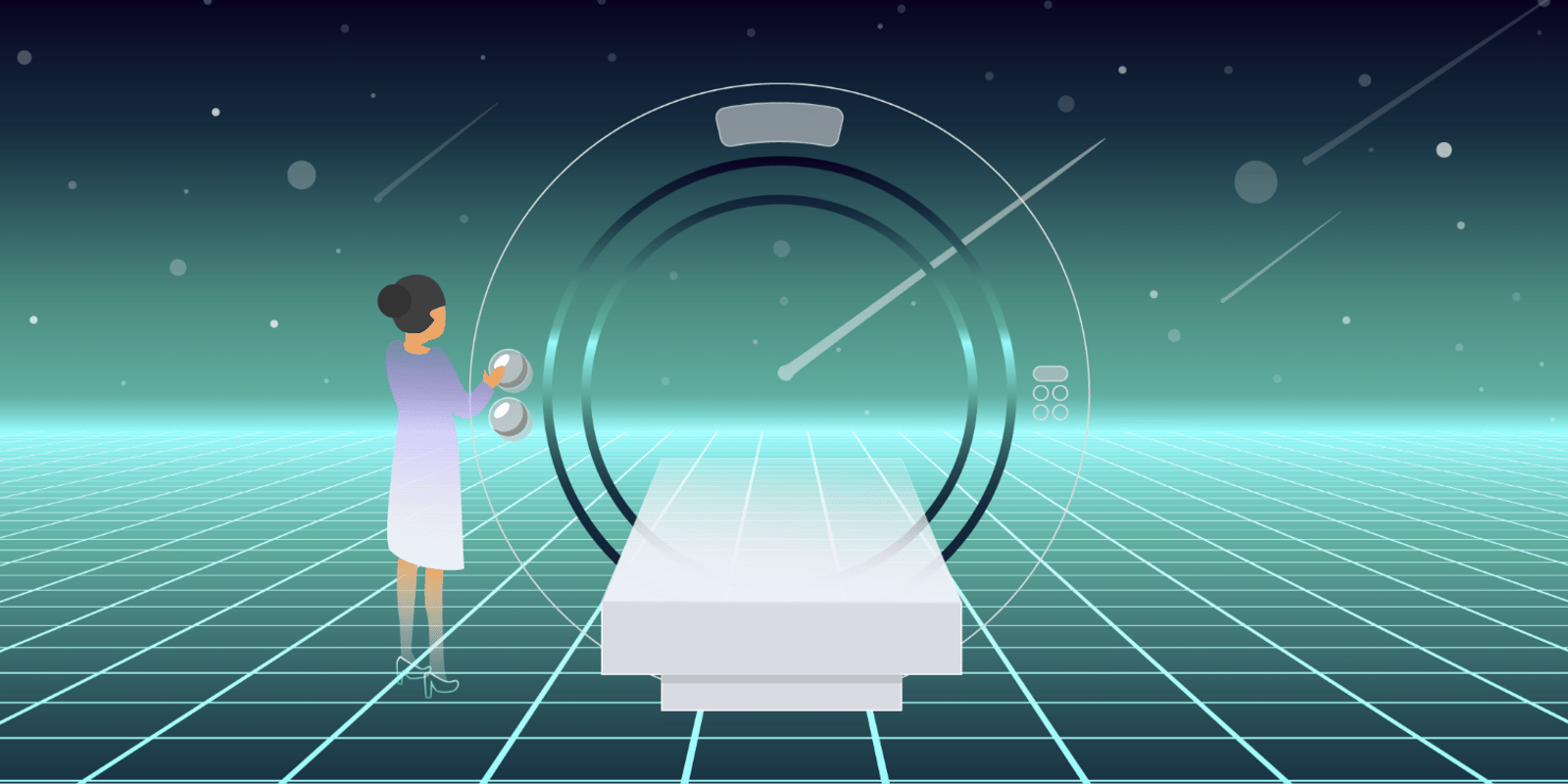
Being a radiologist today can feel a bit like being on the Starship Enterprise: you have all these Star-Trek-like tools at your disposal — devices and applications with the ability to interpret incredibly sophisticated digital images that we couldn’t have imagined even twenty years ago. This technology has fundamentally changed the way we obtain important diagnostic information and provide value for patients. But the reality is, it gets lonely in space.
Behind this technology are people — these people are our patients, and they still seek a meaningful human exchange, especially when undergoing potentially stressful imaging exams. The irony of our situation is that, for us radiologists in the imaging spaceship, technology has become a double-edged sword. One side of the sword allows us seemingly limitless diagnostic capability at nearly the speed of light, while the other side of this sword is a barrier to more meaningful care. We can read imaging exams from any place that has a computer — we don’t need to be in the same hospital, imaging center, or even the same state as our patients. Technology separates radiologists from our patients.
This fundamental shift away from people-centered radiology has several problems.
First, the shift away from direct patient-radiologist communication can diminish providing the most accurate and relevant interpretation of a patient’s imaging examination. For example, I read a CT scan on a patient who had right upper quadrant pain and the CT scan showed gallstones. The gallstones were presumed to be the cause of her pain so she had her gallbladder removed. Guess what? — the pain was still there after surgery. She had two more CT scans and neither showed a cause for her persistent pain. Since my colleagues and I include our phone number at the bottom of every radiology report, this patient called me in the reading room one day to ask me to take another look. We had a long conversation about exactly where her pain was located and what movements elicited the pain. Because we had this conversation, I was able to identify a tiny wire that had migrated from her pacemaker into the muscles of her right upper quadrant of her abdomen. This was clearly the cause of her pain. The wire was so small and seemingly innocuous that despite my having 1000s of images on the patient, I would not have seen it or known it was causing any problem unless I spoke with her. Had it been routine procedure for the radiologist to speak with the patient before and after her first CT scans, it may have saved her a surgery to remove her gallbladder as well as several follow up CT scans. But I was back in my “imaging spaceship,” in a land far away from patients, reading their imaging studies.
As a member of the previous Radiological Society of North America (RSNA) Patient-Centered Radiology Steering Committee, my colleagues and I surveyed 694 RSNA members on various aspects of patient-centered radiology. Of these, 89 percent agreed that promoting awareness of radiology’s role in patients’ overall healthcare is important to how they practice. However, only 31 percent said their practices regularly promote awareness of radiology’s role in patients’ overall healthcare.(1) In an era of value-based care, the value of radiology in the healthcare continuum is sometimes less than what it could be because we are not interacting more with our patients. Our survey also found that 73% of survey participants reported that time or workload frequently prevented them from communicating more directly with patients. Technology has allowed us to receive more images than we could have ever imagined. There are no longer dark rooms to develop films. Digitized images are ready in an instant.
Radiologists (as well as nearly all physicians) are faced with extreme system complexity and administrative burdens. My colleagues and I often spend far too much time gathering information from disparate medical record systems, finding comparison imaging studies from different institutions, and chasing down additional clinical data from the ordering physicians. While having that information is critical to my job, it should be automatic. My technology should be designed to supply this information for me and thus allow me more time with patients and their physicians.
Finally, radiology is a specialty where burnout is a serious concern and we know burnout is linked to loneliness. Two radiologists are often sitting in their spaceship-like reading rooms surrounded by computer monitors with rare interaction with other physicians or patients. What could be more lonely? This suggests that greater human connection may be a key to solving radiologist burnout.
By no means am I detracting from the power or potential of technology to help us deliver better patient outcomes. Indeed, I am grateful for my advanced tools every day. However, in the imaging technology space race, it’s important that we our technology is designed with the people behind the images in mind. Our technology should not take us away from patients but should allow us to have more time with our patients rather than strapped into our spaceships far away. I find myself longing for the days when the radiology was a tad less “space-age.”
References:
- Kemp, Jennifer L. Patient-centered Radiology: Where Are We, Where Do We Want to Be, and How Do We Get There? Radiology. DOI: 10.1148/radiol.2017162056.
- Harolds, Jay A. Burnout of Radiologists: Frequency, Risk Factors, and Remedies: A Report of the ACR Commission on Human Resources. Journal of American Radiology. DOI: 10.1016/j.jacr.2015.11.003
Jennifer Kemp, MD, FACR is Vice President of Diversified Radiology; a private practice radiology group in Denver Colorado. She specializes in imaging of the chest, abdomen and pelvis and is an activist for patient centered radiology.







